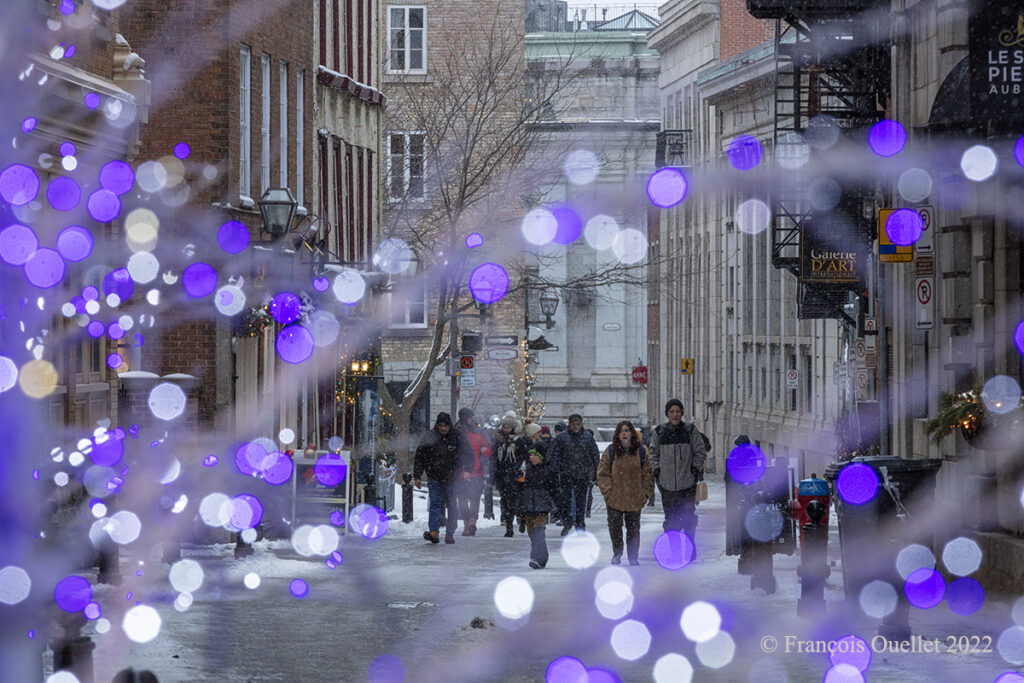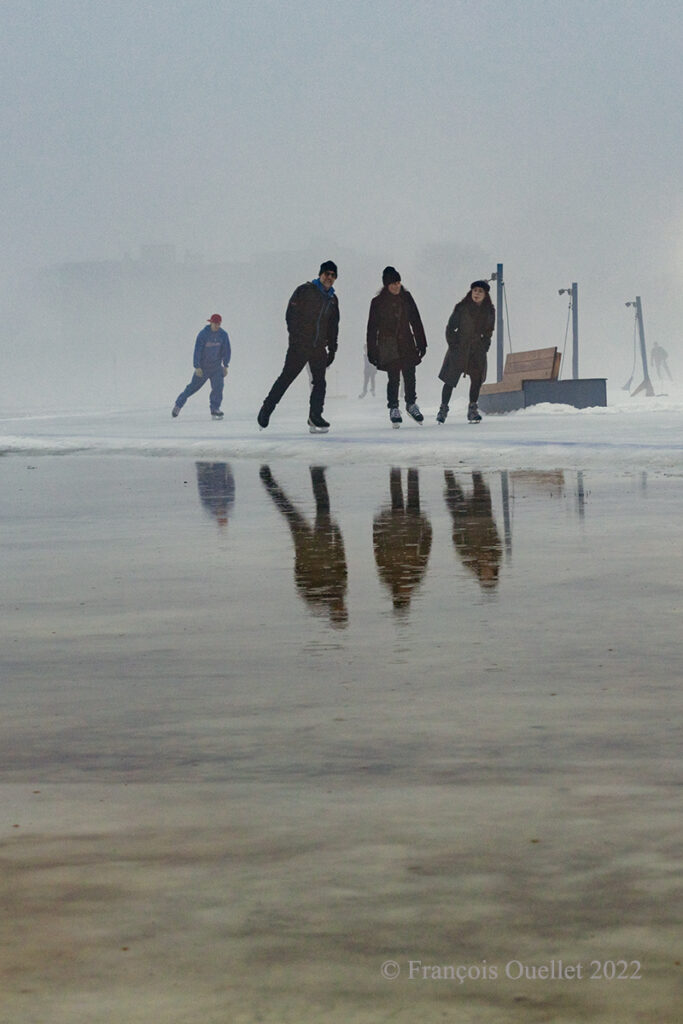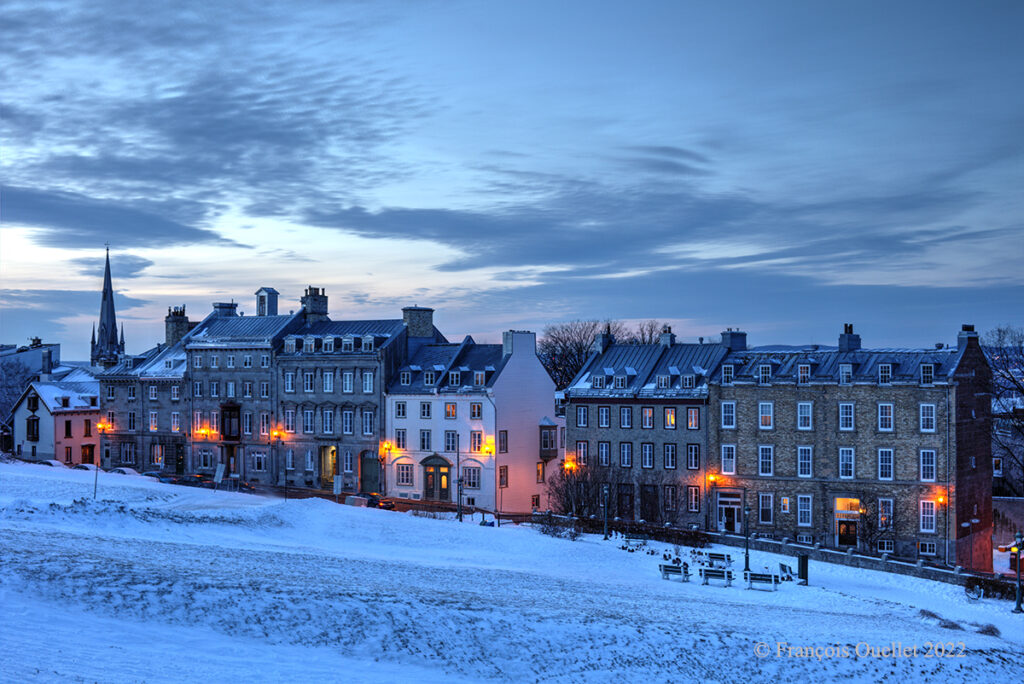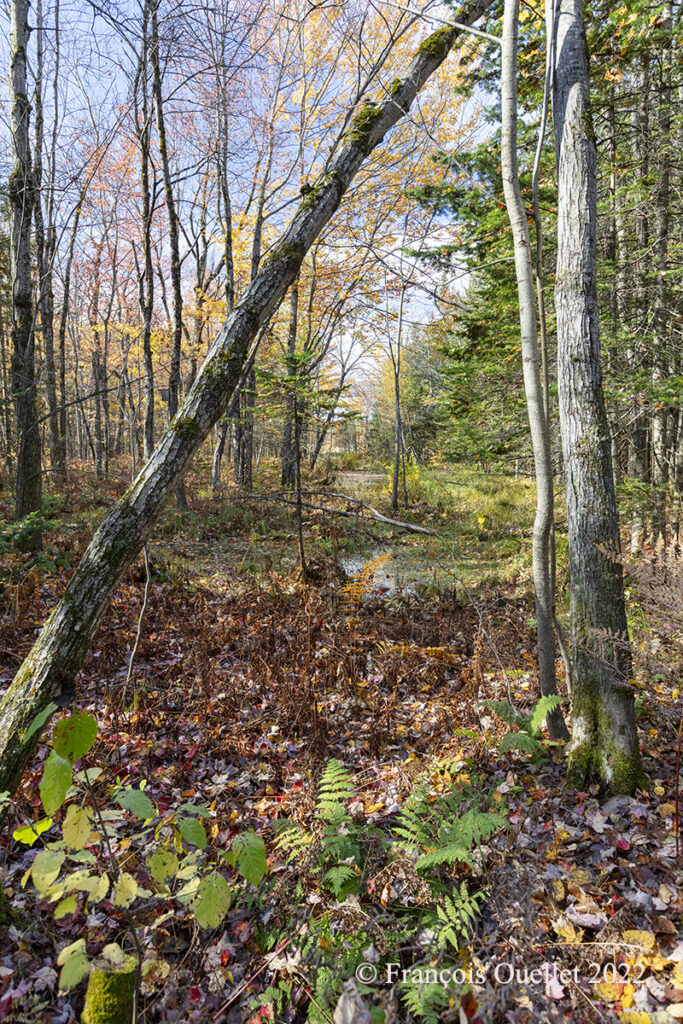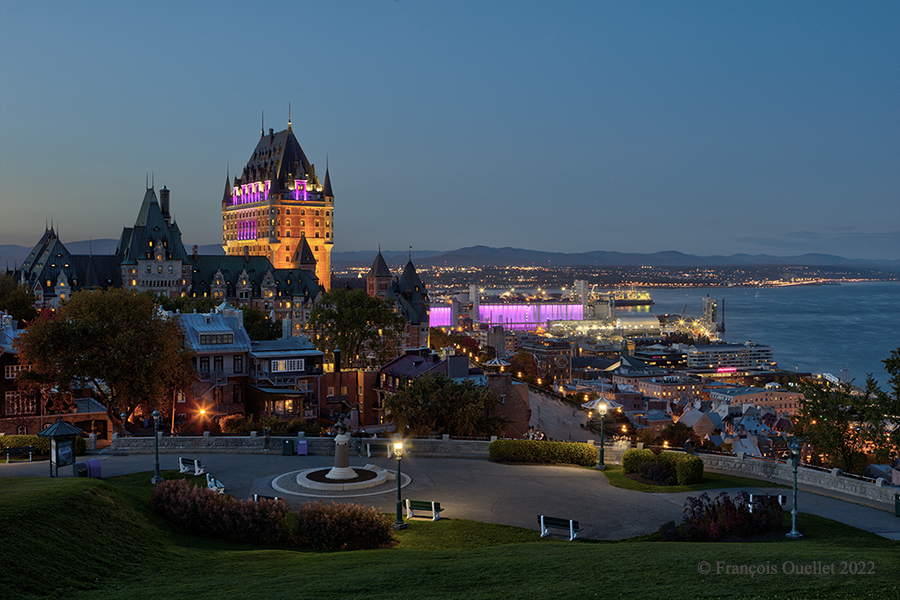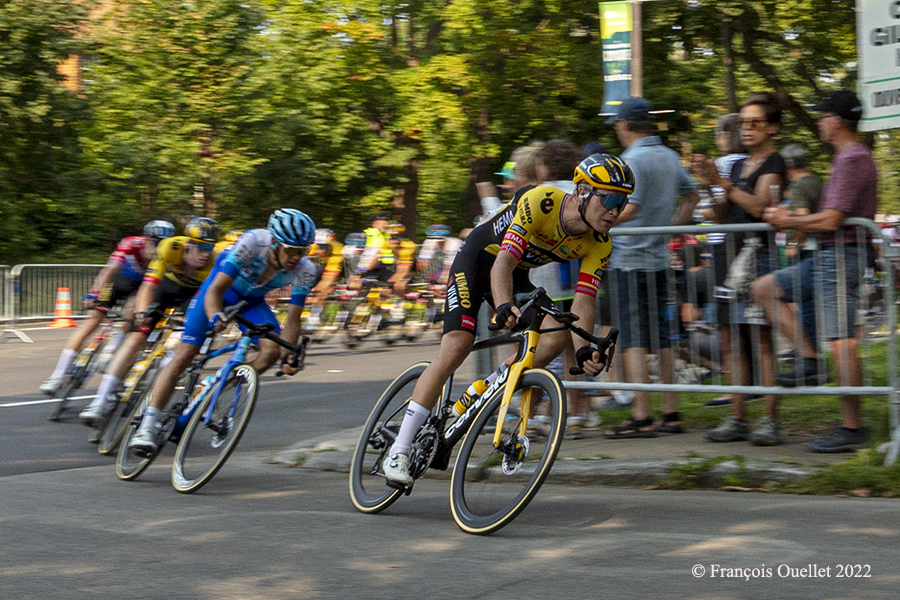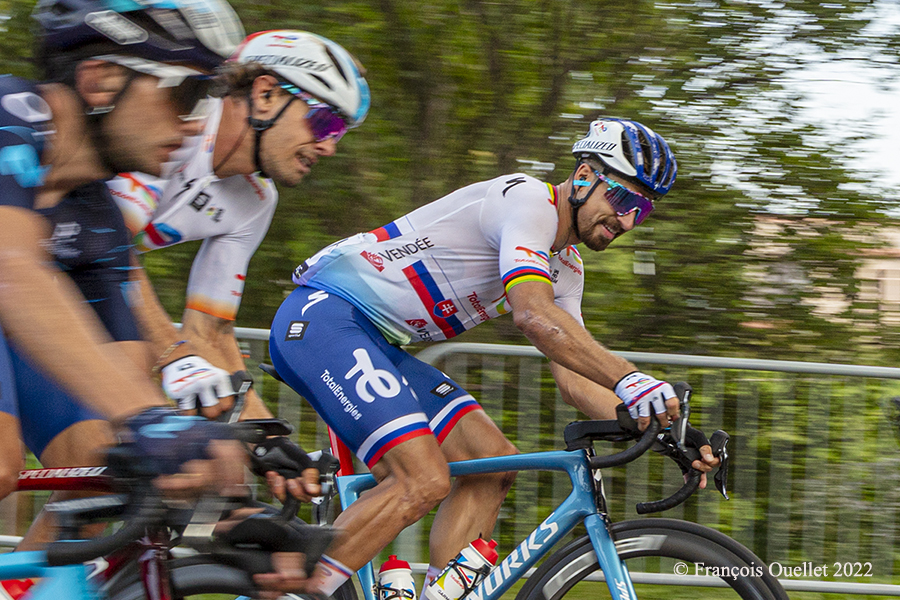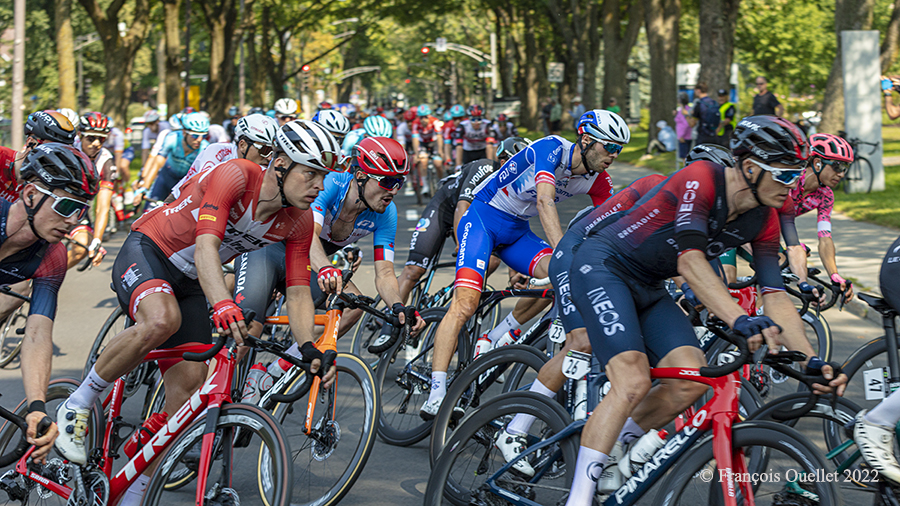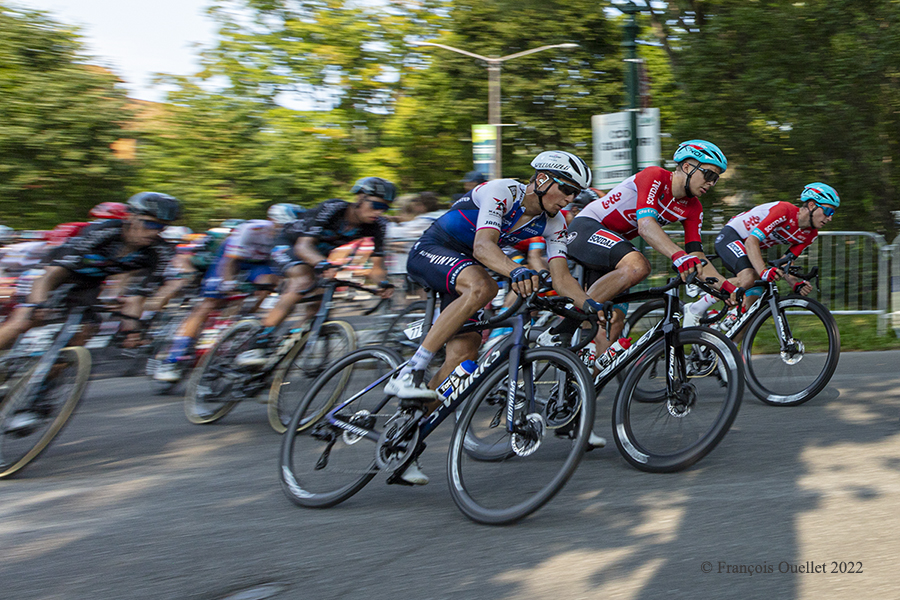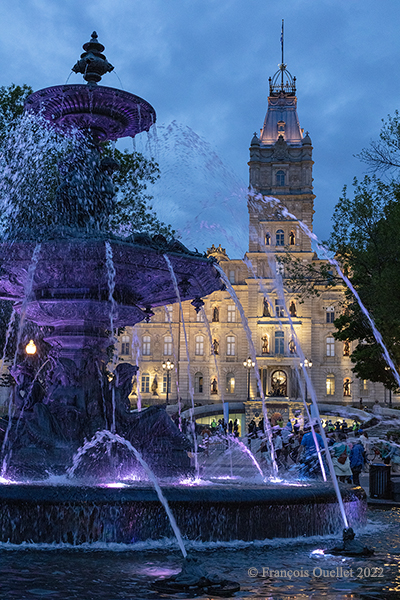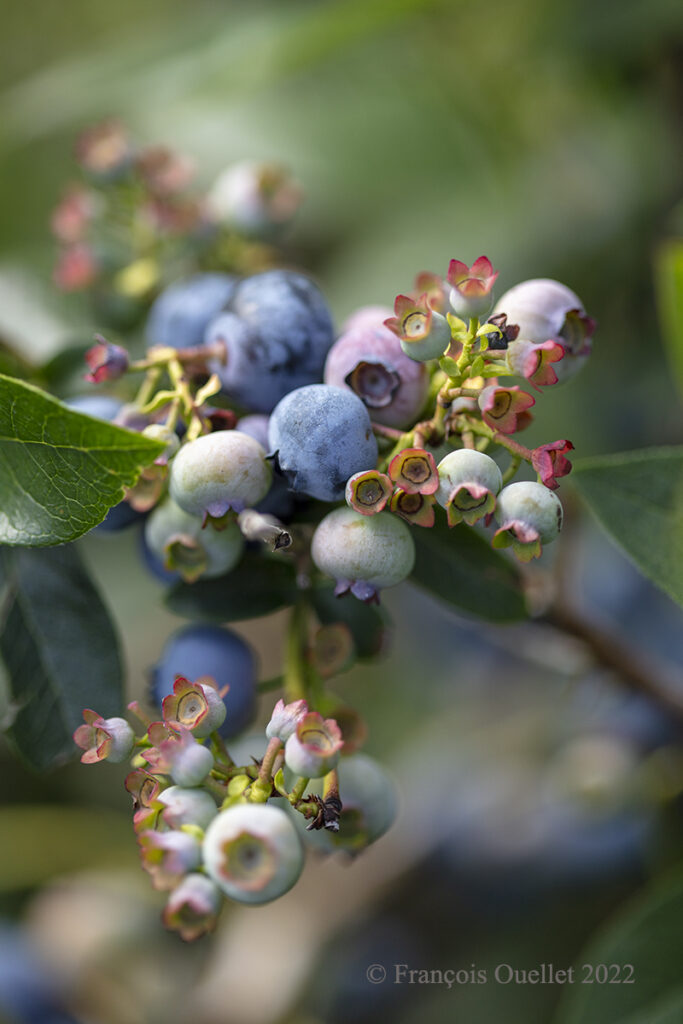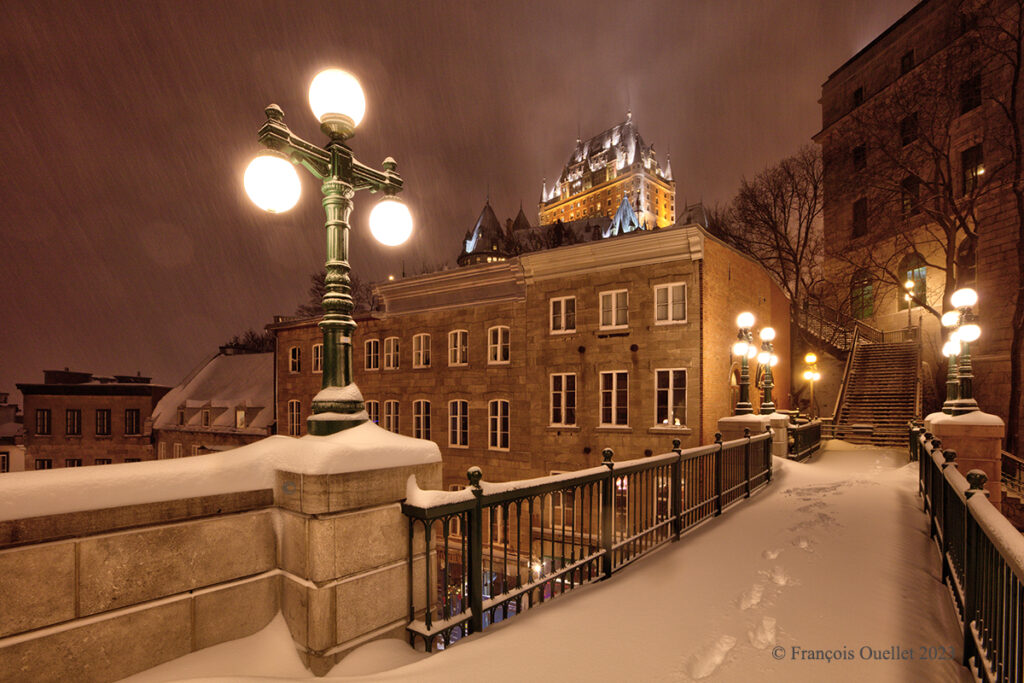
The Old Quebec in winter is always exciting to photograph. The continually changing weather presents new opportunities that must be seized. Moreover, for the same weather system, each hour that passes also offers a different luminosity. The photographer is spoilt for choice.
For the picture above, taken with a Canon 5DSr, I positioned myself in a place that is normally off-limits during winter. That’s why you can only see my footprints in the snow. But hey! The risk was minimal and the angle of view perfect to capture the Château Frontenac.
The street lamp emits a light that needs to be corrected in the camera. Instead of “AWB”, select “tungsten”. This adjustment allows you to reflect exactly what you see, rather than ending up with tones that are too contrasty. HDR photography allows for some correction of large contrasts in brightness.
The lights on the roof of the Chateau Frontenac illuminate the snow falling around the building. This snow makes for interesting sky tones, even though the blue hour has long since passed.
In terms of the photographic composition, the low wall and fence serve as the entry point into the photo. The lamp post is located at a point respecting the rule of thirds. The building on the right blocks the view and invites the eye to continue its exploration to the left of the photo, which leads the viewer to the Chateau Frontenac.
The photo below, taken a few minutes later, uses the stairs as an entry point into the photo to quickly lead the eye to the Château Frontenac. In this case, a vertical format lends itself better to the scene.
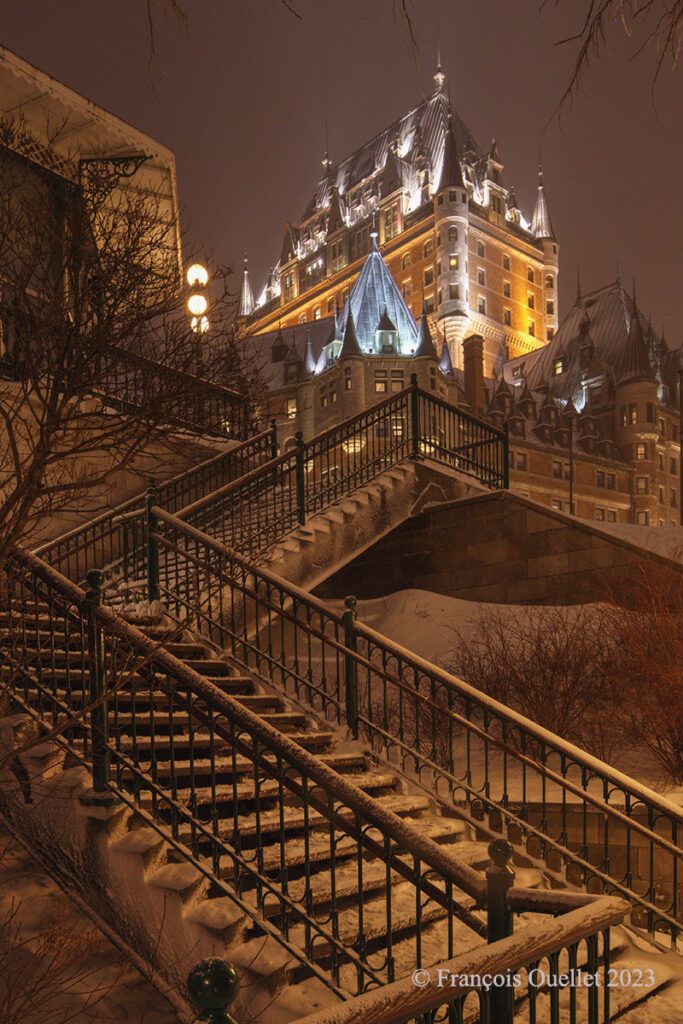
The snow on the railings and steps adds an alternating black and white effect. Otherwise, everything would be quite dark and we would lose a little interest. A nearby street lamp provides enough ambient light to illuminate the scene; however, I was careful not to include the light source directly in the photo, as it distracts the viewer from the main subject.
In winter as well as in summer, I use a tripod to reduce camera shake and improve resolution in low light conditions.
Click on the link for more pictures of Quebec City in Winter on my blog.
